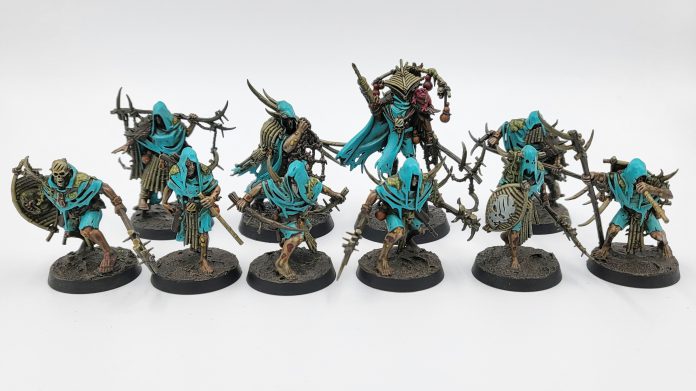Welcome to the Gnarlwood. Nestled deep in Thondia, a primal region in Ghur, the Gnarlwood represents a ripe target. Hidden inside is the crash of Talaxis, a ruined Seraphon void ship with countless treasures.
Yes, a ripe target for those brave enough. But what’s in the way? Only other warbands that want to kill you. Monsters and beasts that want to kill you. Trees that want to eat you. Land that wants to swallow you. You get the point. Oh yes. A ripe target indeed…
Welcome to the Heart of Ghur. Welcome to Warcry 2.0.
Bloody Brilliant
If you haven’t yet played Warcry, you’re missing out. In my not-so-humble opinion it’s the best ruleset Games Workshop makes. Games are fast (they last less than an hour) and they play fast thanks to alternating activations and limited turn options.
That does not, however, make the games shallow. The high-tempo tempo and varied scenario objectives mean your fighters will jump in and out of combat as they move, grab objectives, run off with them, run off the board, run on to the board, and more. It’s a tornado of dice and carnage.
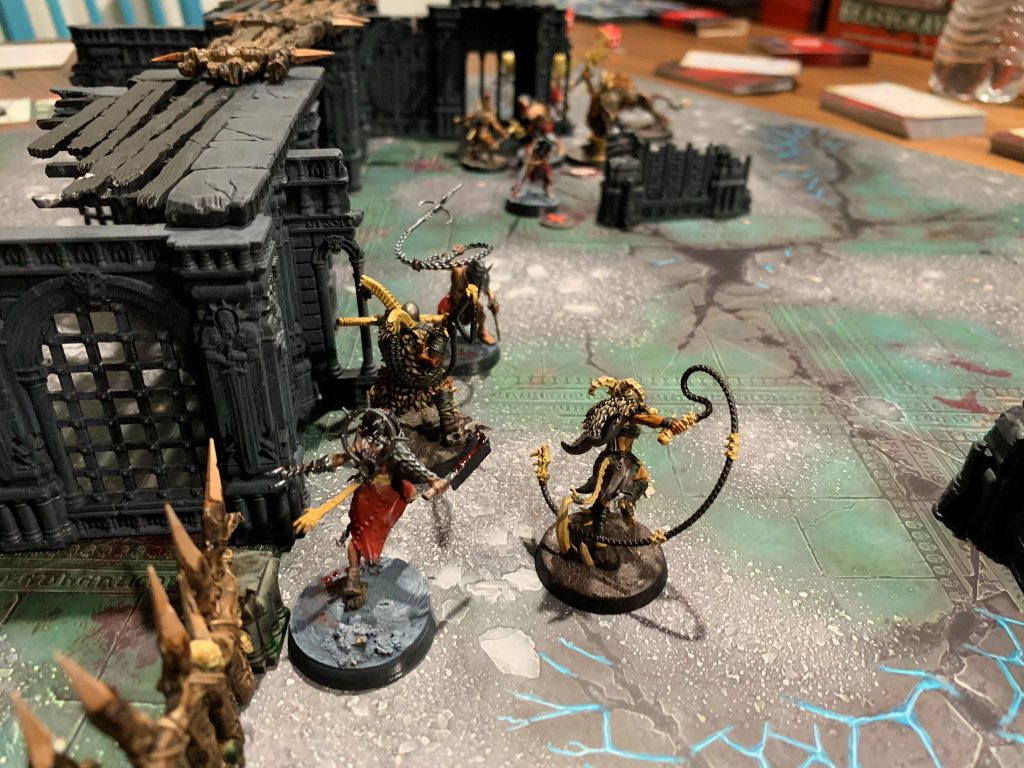
Most of what we talked about in our original review still stands, but here are the basics:
A game of Warcry begins by randomly generating your battleplan. There are 4 decks of cards (or roll tables if you don’t have them) that will generate the terrain layout, the mission’s victory conditions, deployment, and a “twist” that can do everything from modify movement to add wandering aggressive monsters. This system means no two games are identical and contributes to the dynamic field.
Once you’ve got the lay of the land you’ll have to divide your warband of fighters into 3 groups. Deployment is varied in Warcry. The drawn deployment card will dictate where each group deploys and they are usually intermixed with enemy groups; it’s entire possible to deploy directly into melee combat! Additionally, some groups may have to wait until later rounds to enter the battlefield.
Turns go quick. Each player takes turns activating individual models who can move and fight their way across the board. Terrain is vertical and interactive; you’ll find your models scampering up and jumping off platforms and walkways throughout the battle.
Combat is a breeze, taken care of with a single roll and high wound values means high damage. One of my favorite designy things about Warcry is that your average model will survive about as long as your average model in Kill Team, but your attacks succeed more often which feels fun psychologically.
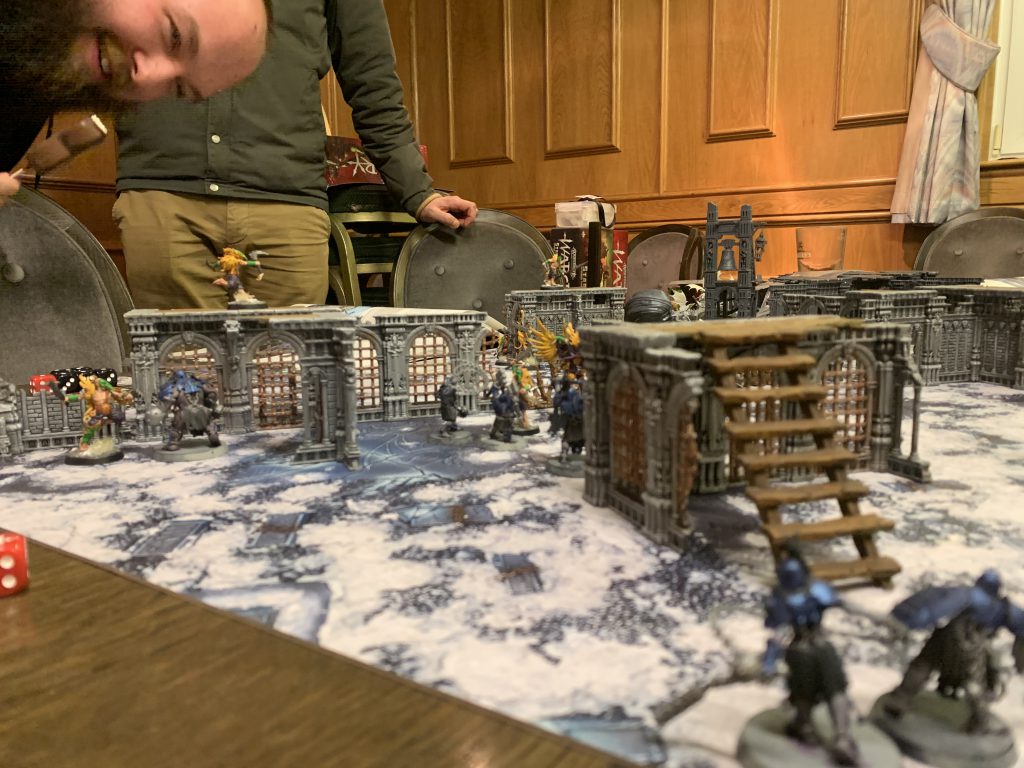
Finally, the ability dice provide a massive tactical element. At the beginning of each round each player rolls a pool of dice and separates the results into singles, doubles, triples, and quads. The player with more singles gets the initiative and controls turn order and some sequencing, but the real heat comes with those other dice.
Each faction has access to unique abilities that help define the faction, in addition to a few universal ones. These abilities can be powerful, granting additional moves or attacks, doling out direct damage, repositioning friend and foe, and more. The catch is, you’ve got to have the right dice.
2War2Cry
Heart of Ghur heralds the release of the second edition of Warcry. We’ve got a whole new Core Rule book and a Compendium releasing in a few weeks that updates every fighter card in the existing game, along with Monsters, Thralls, and Beasts. It also provides your factions abilities. We’ll have more info on the Compendium in a future review!
While this is a new edition, the Core Rules are largely unchanged. Movement, combat, fighter cards, and abilities are all the same. There are, however, some major exceptions.
Deployment Groups – You’ll still divide your warband into 3 groups (Dagger, Hammer, and Shield) but the rules have changed dramatically. You now must divide your models as evenly as possible. In the first edition it was possible to overload a single group, making it harder for your opponent to score “kill all the fights in Group X” objectives. It could also lead to rough games where you started with very few models on the table. This is cleaner and easier.
Reactions – The most significant change in the second edition is the addition of Reactions. Like abilities, reactions require you to spend the appropriate ability dice. Unlike abilities, reactions can be performed on your opponent’s turn. This allows a good bit of counterplay and forces you to reconsider some of your strategy. Additionally, you’ve got to sacrifice one of that fighter’s future actions! They’ve got to be used carefully.
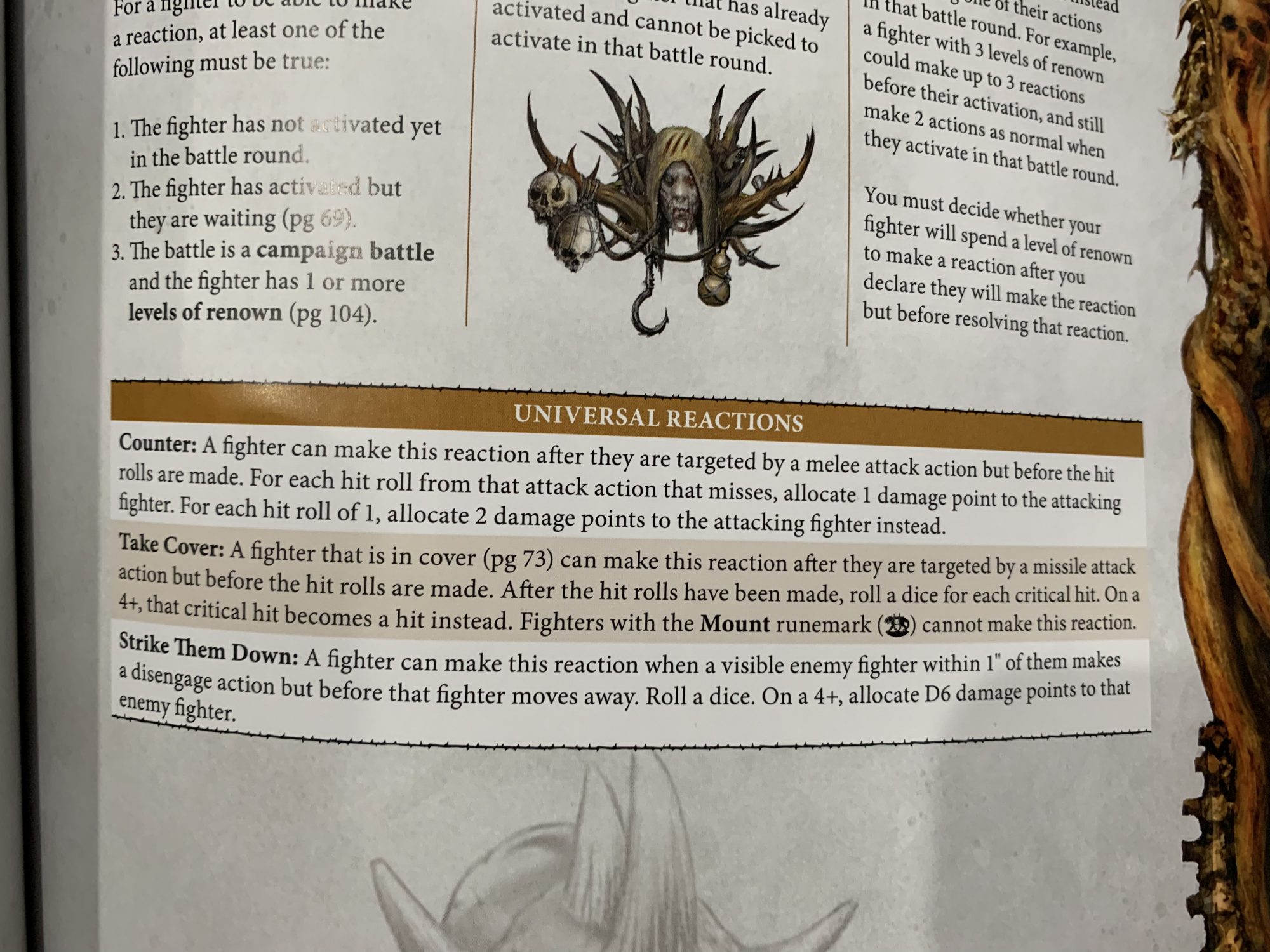
The Core Rules include 3 Universal Reaction, and each faction also receives a unique bespoke (old factions get them too, no worries!)
Narrative Play/Campaign Arcs
While the Core Rules are pretty similar, the rules for Narrative play include dramatic changes.
First up, a lot of the elements of the various 1.0 Tome of Champions have been incorporated as default rules. Lasting permanent injuries are now a core part of Narrative play, as are territory encampments, and Monsters. These became auto-includes as soon as they were release so there is no surprise here.
The biggest change is to the structure of a campaign. In Warcry 1.0 your warband embarked on scripted quests. You’d pick one and go fight with every 3rd fight or so being a unique Convergence battle you had to fight and win to progress. Complete all the Convergences and you’d win your prize.
The entire Convergence system in 2.0 has been replaced. Now quests work more like a Path to Glory quest. You still select the Quest your warband has embarked on, but rather than progressing through a fixed number of rounds and specific battles you’ll accrue Quest Points by completing certain objectives. Once you succeed, you’ll finish the quest. This eliminates issues where players would get stuck on a Convergence, unable to proceed against stronger foes.
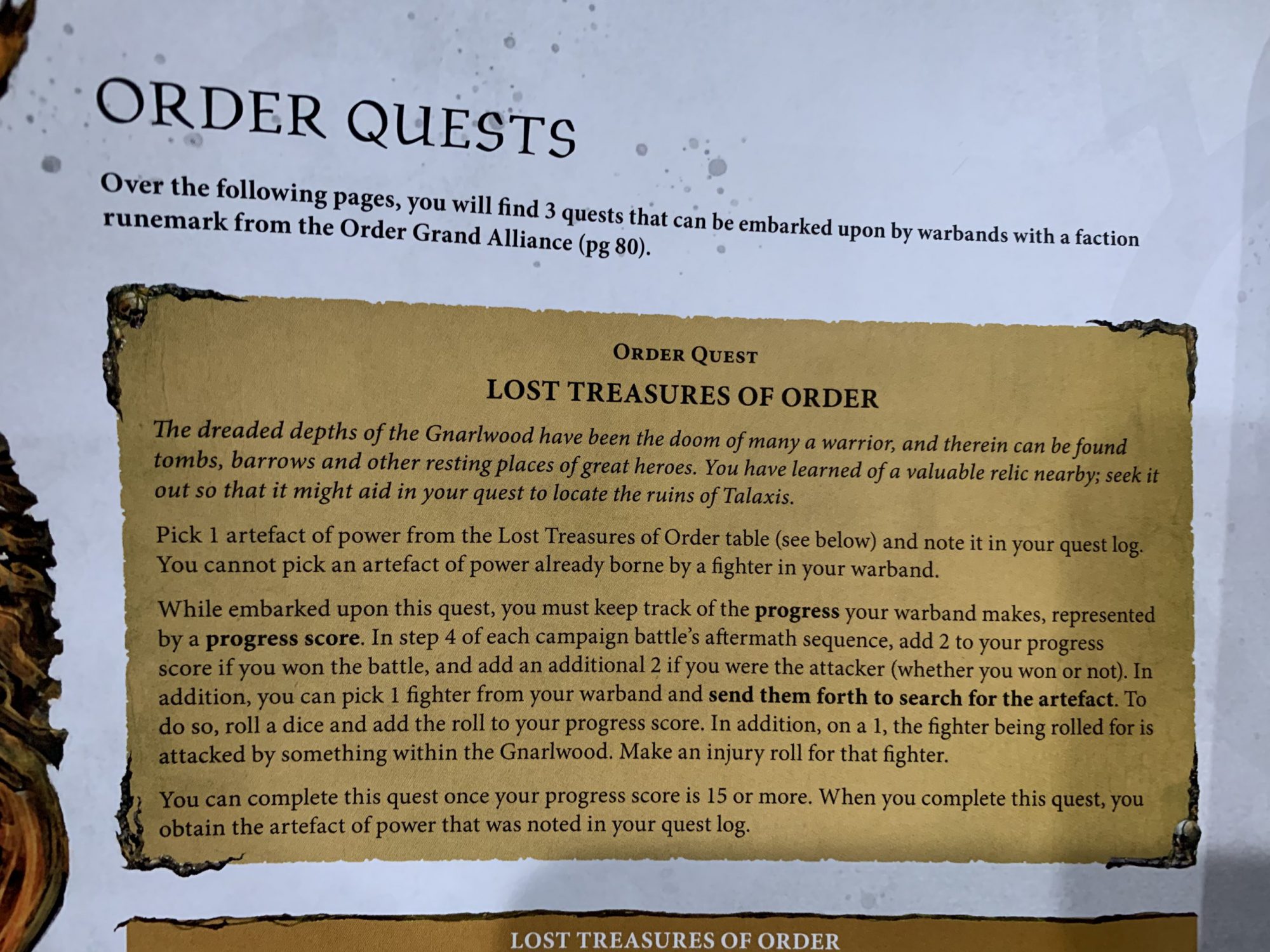
Additionally, a Territory management system has been added. All players begin on the outskirts of the Gnarlwood and can venture out to explore during the Aftermath sequence of a Narrative game. Individual models are selected to explore with a chance for Success or Failure (or ruin!). You can relocate your encampment depending on what you find, an eventual necessity. These special locations provide bonuses but eventually your encampment will be found and raided by opposing warbands, losing your benefits and reducing your warband size until you can find a new one.
Finally, individual models can gain levels of Renown. This is similar to the first edition, but in additional to special traits it also allows them to burn these levels to perform Reactions during a game without sacrificing an Action…quite powerful indeed.
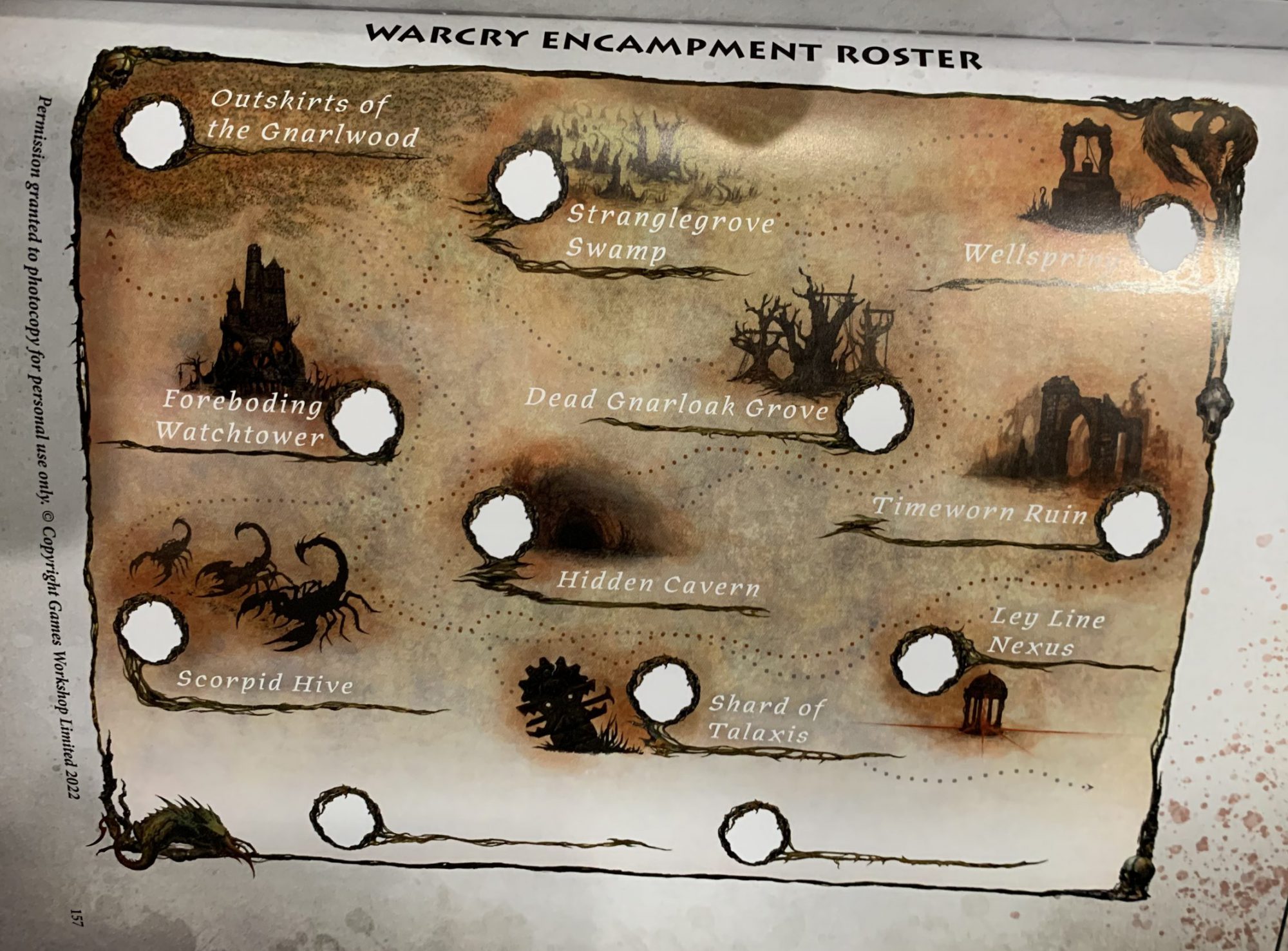
Another major addition to the Core Rule book are Campain Arcs. Again we saw these in previous Warcry books but they’ve been shined up a bit and regeared. In these arcs you’ll play through a series of specific battleplans in a certain order, with the results of one game feeding the next in small and large ways.
In The Path of Ven Talax, two players take control of rival warbands. Game 1 is a Raid, with one player controlling a critical map and the other trying to steal it. The winner becomes the Defender in Game two, a race where they try to escape across the board. Finally the last mission is a game of controlling up to 5 Treasure tokens scattered across the board.
The other included Arc, The Chotec Valley, is for 4 players. The first few rounds are a Round Robin style format where you play normal games of Narrative Warcry with the addition of Serphon wild monsters; these are Seraphon models you add to the board that can and will attack both players! There is a press-you-luck element involved in victory points, with the winner getting a grand advantage in the final 4-player battle conclusion!
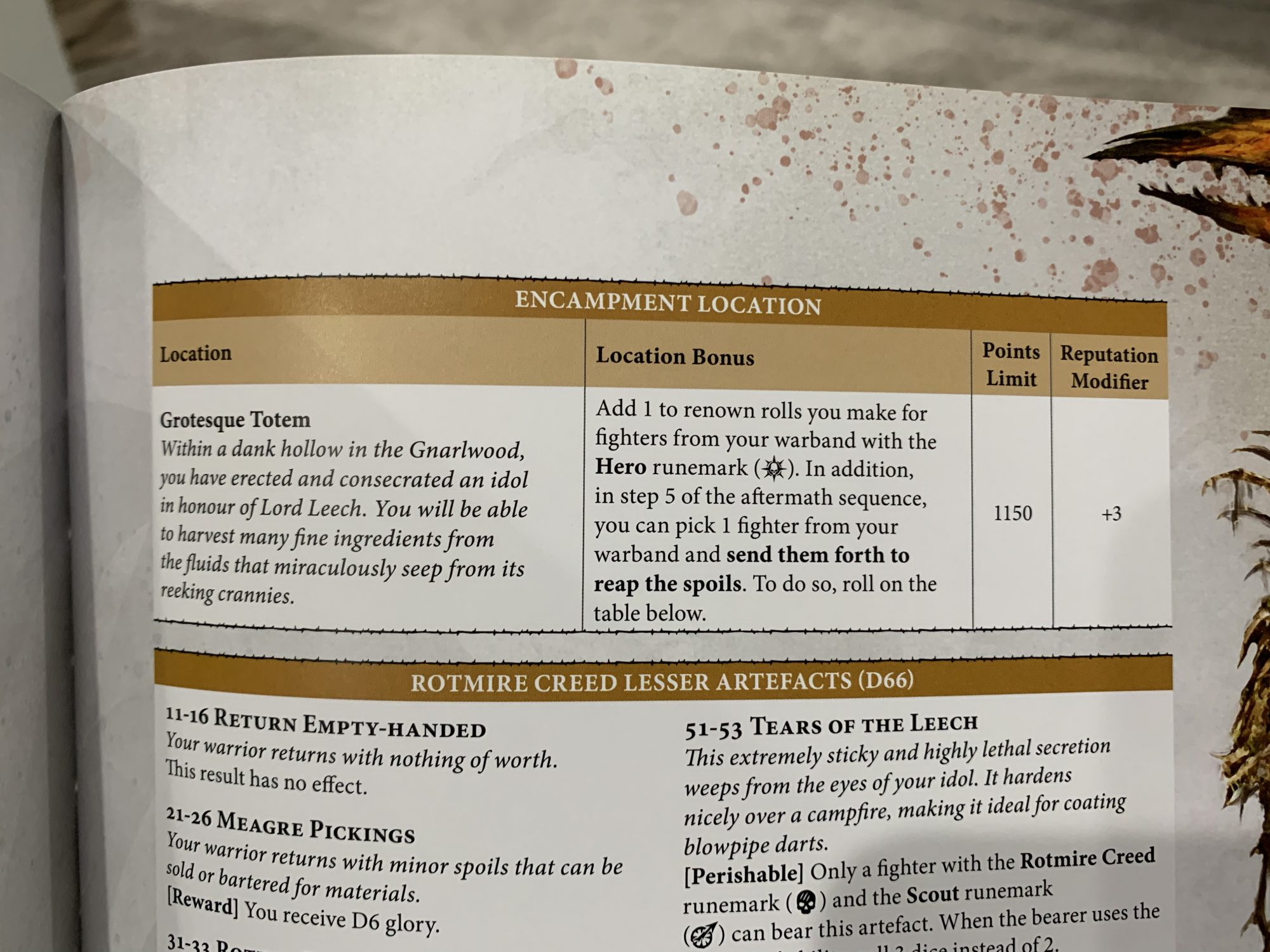
I’m very keen to play these arcs, and hope to see them expanded with more published as we go on through this edition.
Narrative play was always the heart of Warcry and where it shined, in my opinion. Everything about the second edition makes this narrative richer and more exciting. The quests are more varied and dynamic, and scads of artefacts for every faction and alliance mean you’ll soon have a unique and varied warband all your own. Campaign Arcs are the cherry on top, assuming Games Workshop can keep putting out products with new options.
What’s in the Box
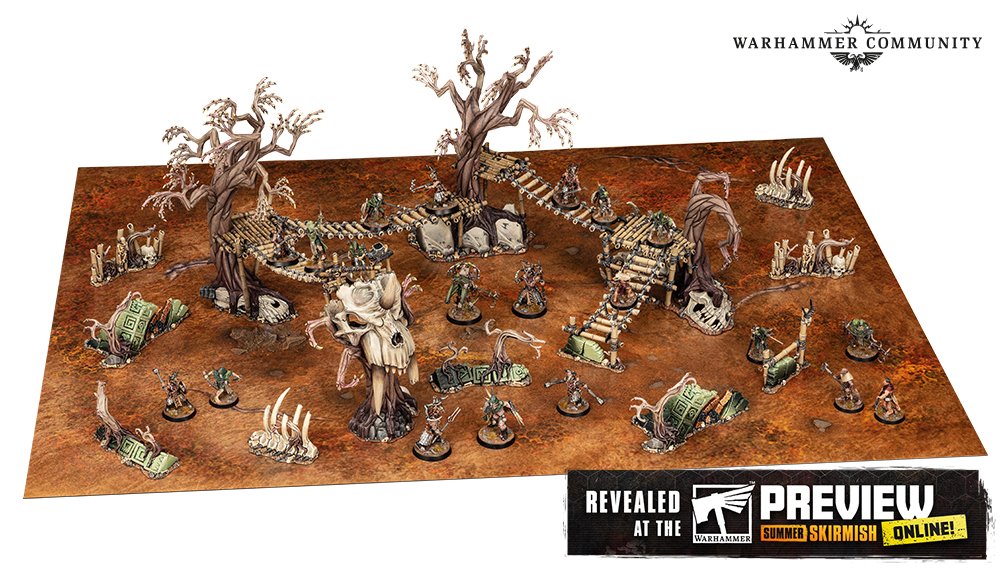
The Heart of Ghur box contains:
- The new Warcry core book
- Rot and Ruin, the supplement containing rules for the included gangs and terrain
- Dice, tokens, and other play aids needed to run the game
- A double-sided game board
- Six sprues of terrain
- Two warbands:
- The Horns of Hashut
- The Rotmire Creed
Digging into the box, it’s got the usual assortment of dice, pogs, and boards you would expect… but that’s probably not why you are reading this review! Let’s talk plastic. First off, the terrain is WAY bigger than it looks in the promo pictures.
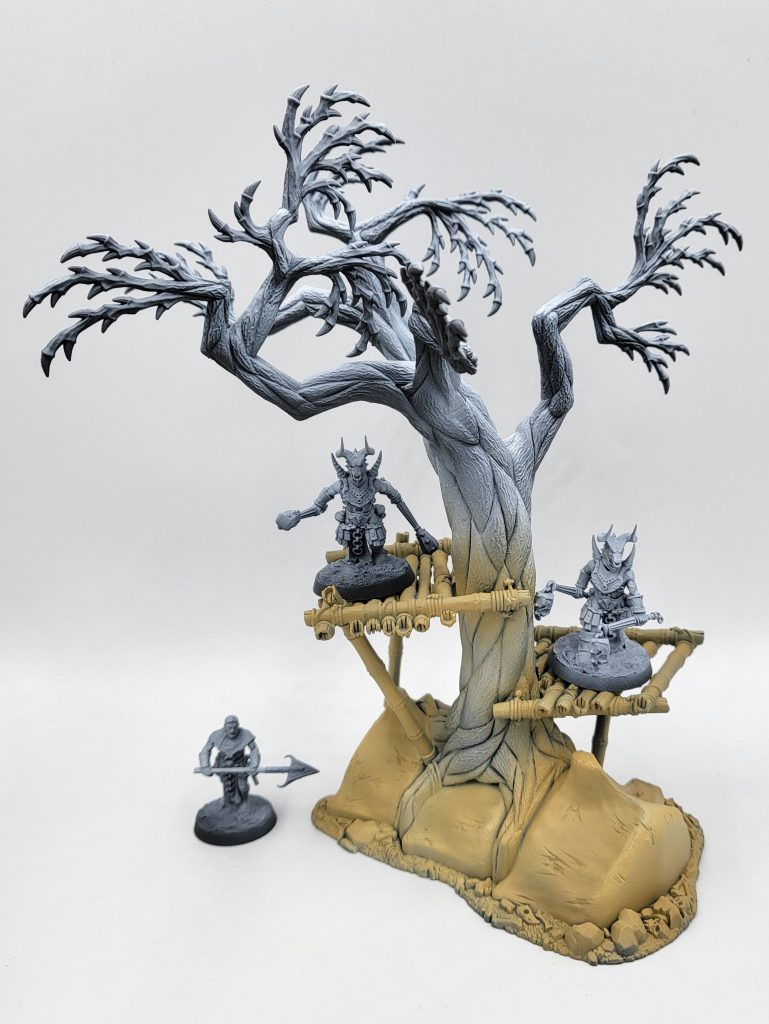
I was pleasantly surprised – this box has four centerpiece-worthy pieces of terrain.

It’s notable that the builds for said terrain were very, very involved. I had dreams of getting this entire box painted up for the preorder date, but the terrain builds took up more hobby sessions than I expected. My main suggestion for anyone tackling the “meat tree” terrain is to always dry fit before you glue.
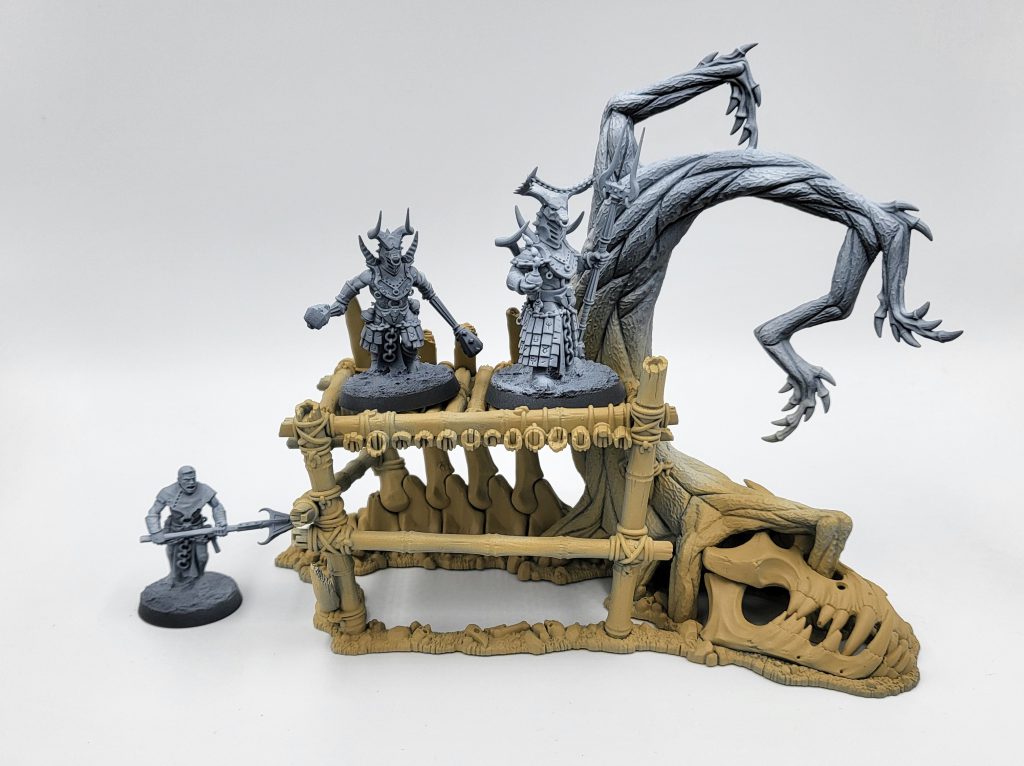
First up for gangs is the Horns of Hashut. These are the human servants of Chaos Duardin; the advance force that shows up early and softens up the enemies for their Chorf overlords. This kit was a ton of fun to build, especially the horned helmets.
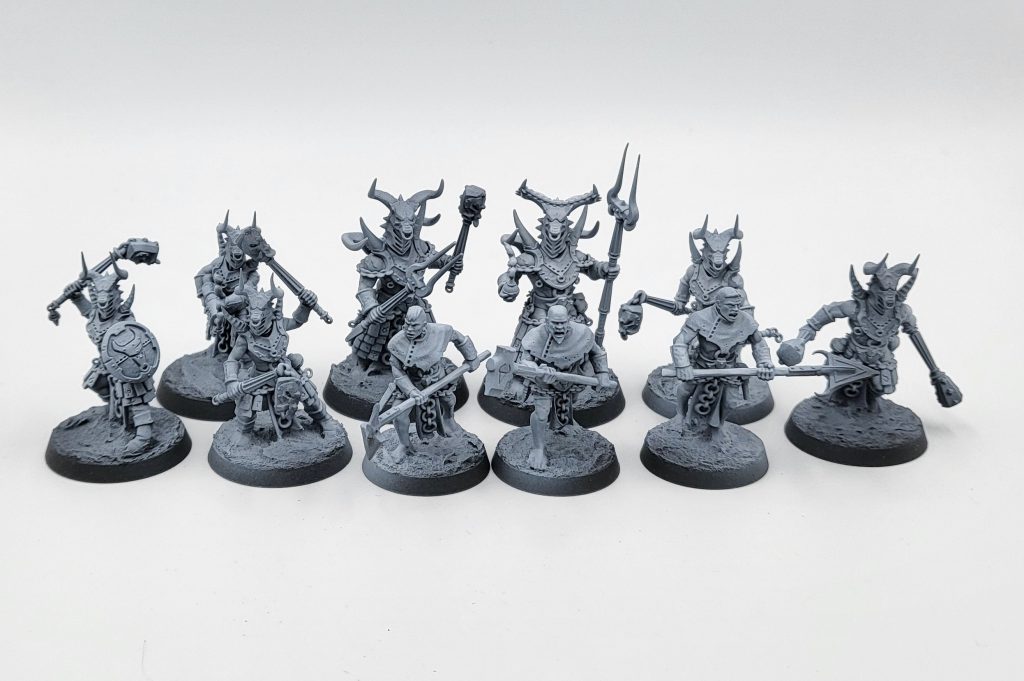
Both of the kits fall into the standard pattern of Warcry warband kits: oversized leaders, a few select weapon choices, and some minor customization options. As a mortal Nurgle player, the Rotmire Creed is a slam dunk! They are essentially a cargo cult that doesn’t know they are in league with Papa Nurgle. While there are a few fiddly bits scattered throughout, this was another enjoyable build – though you need to do a bit of gap filling where the front and back of their hoods meet.


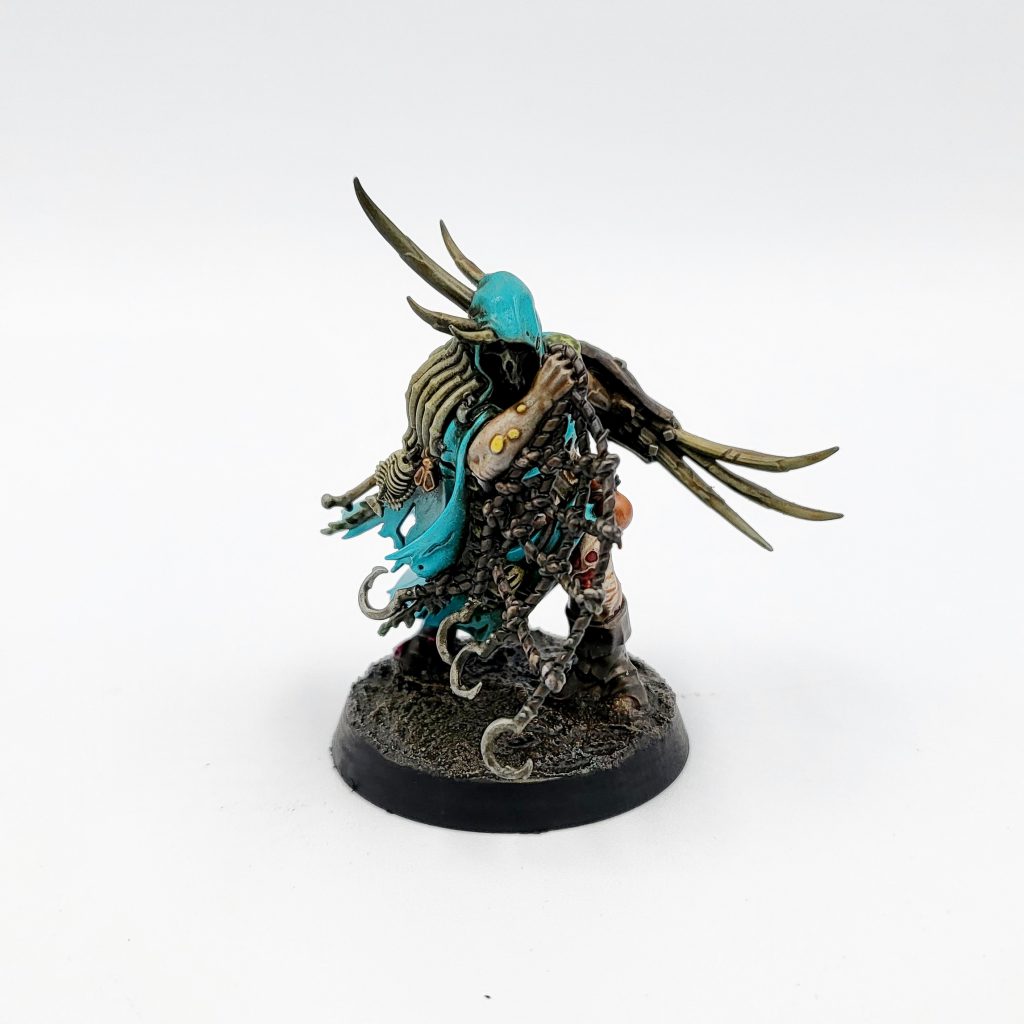



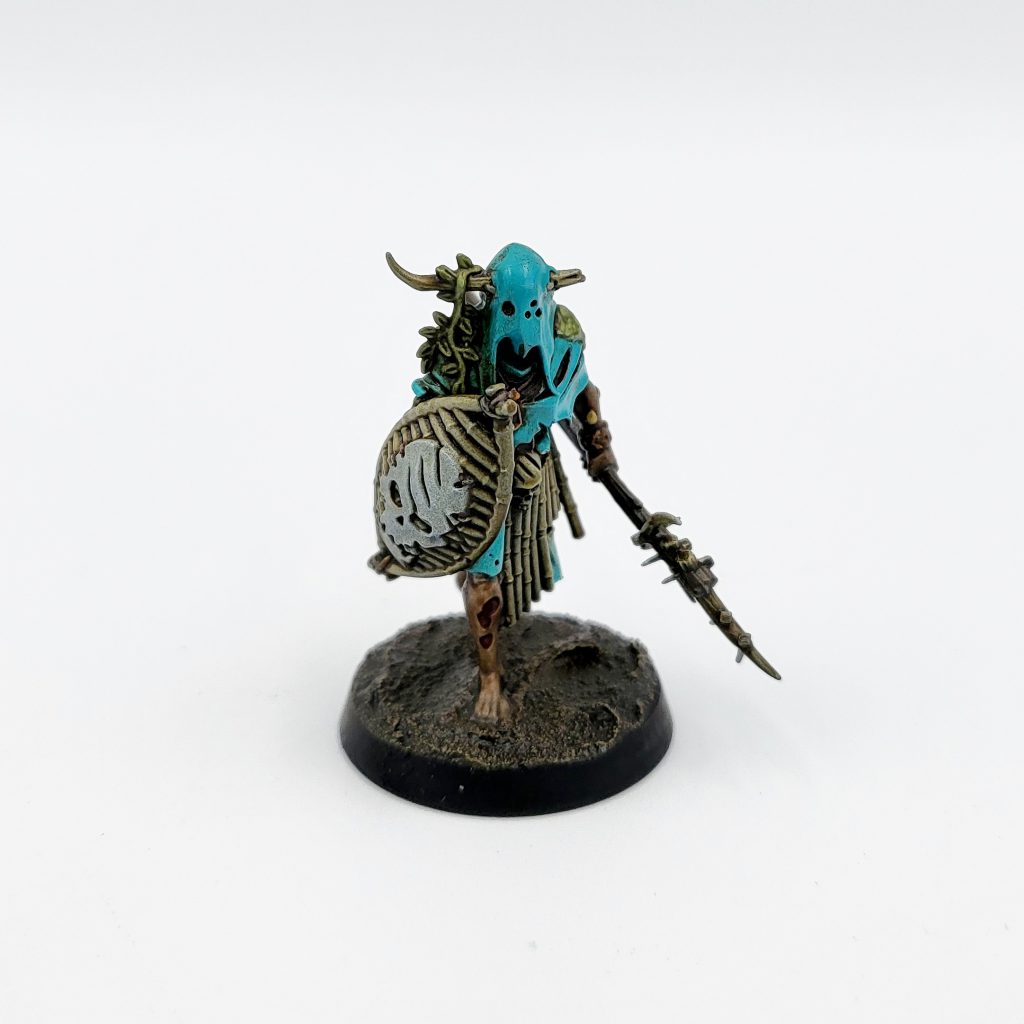
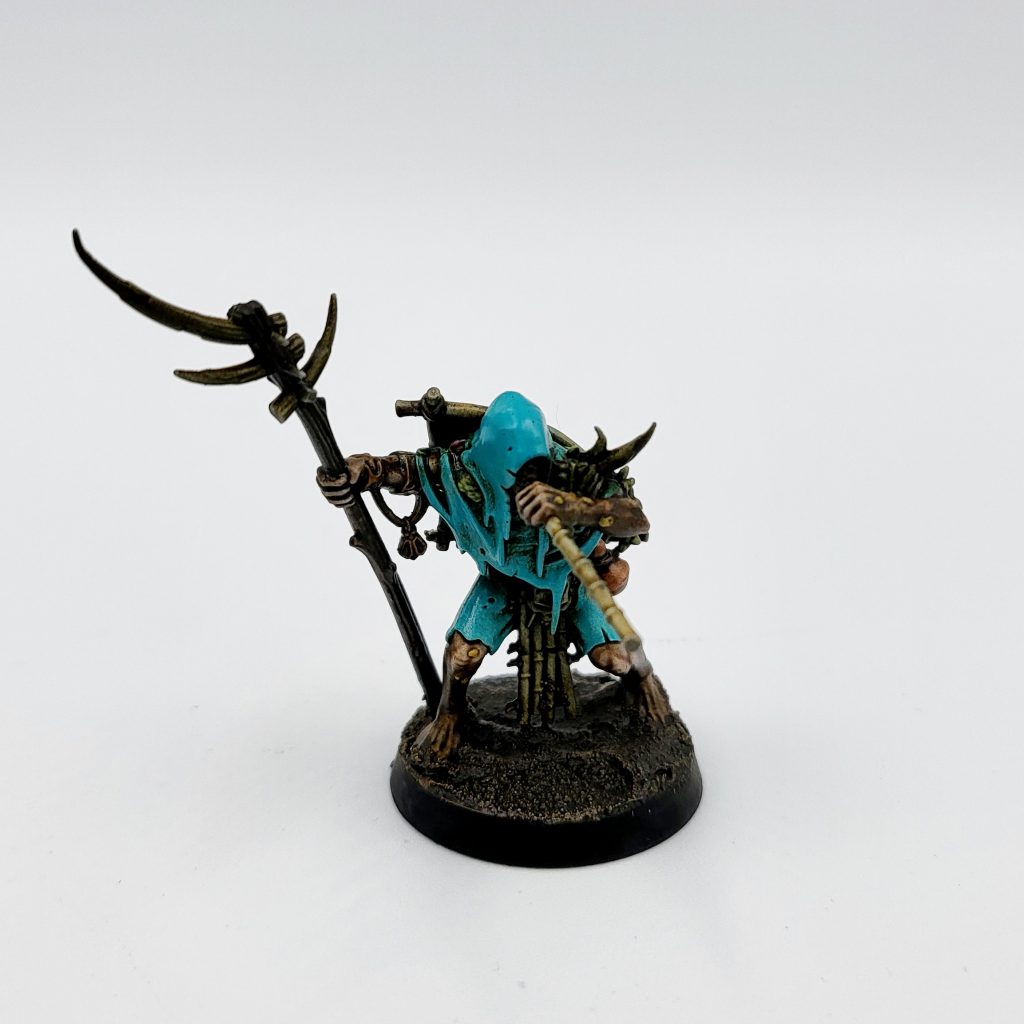
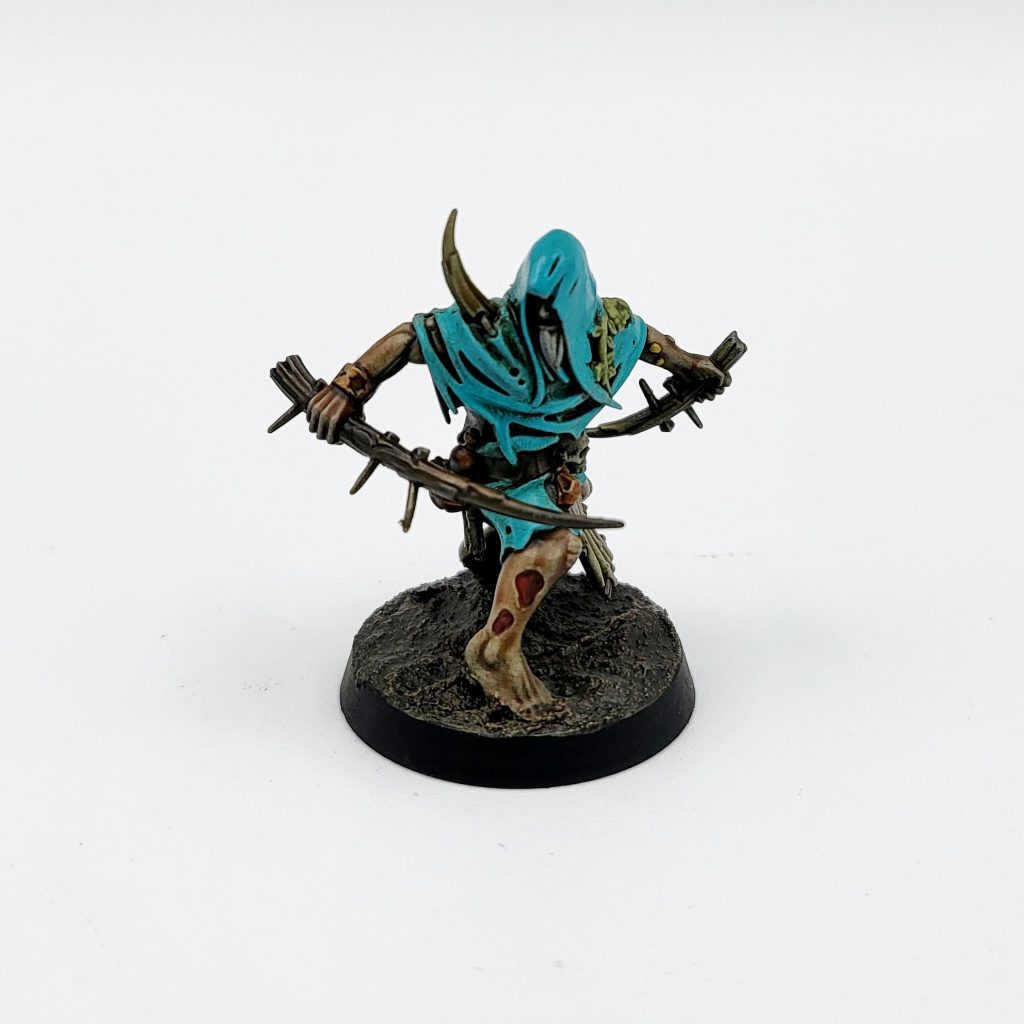
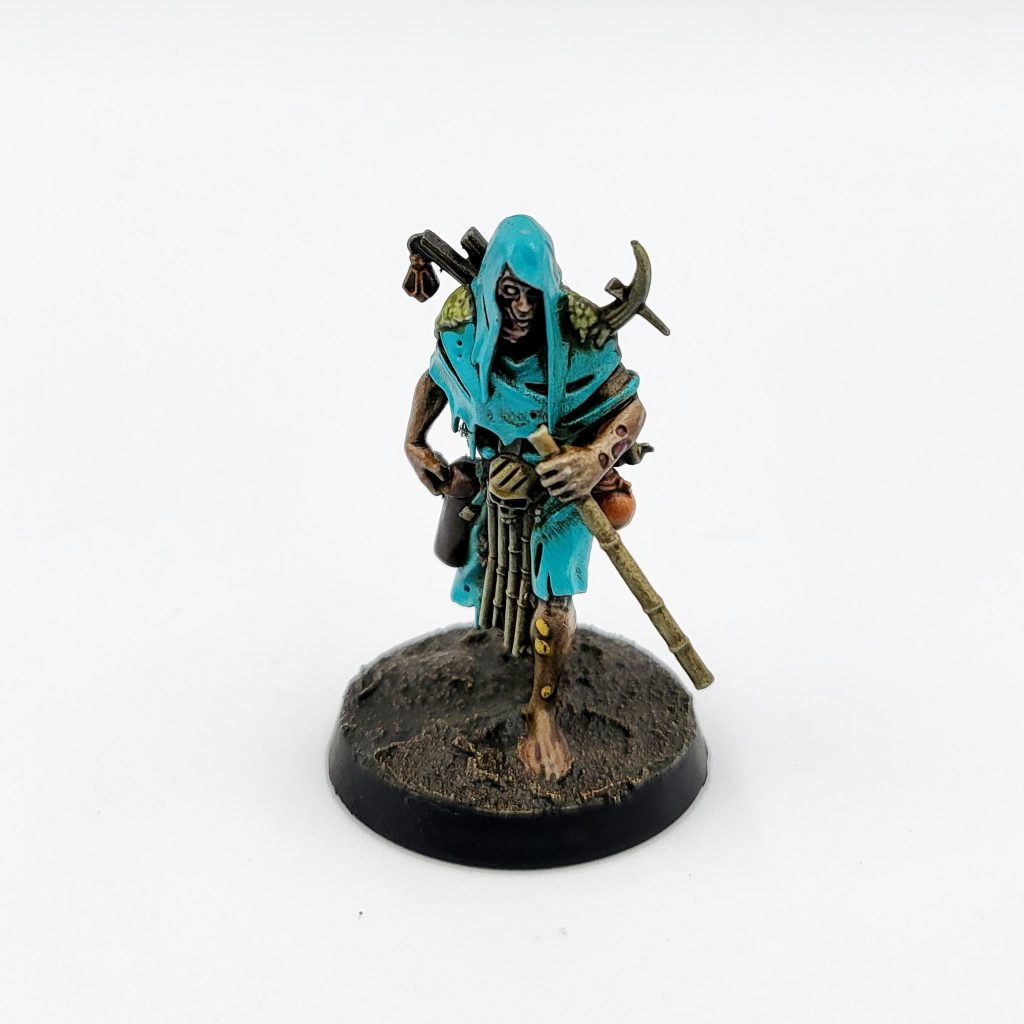
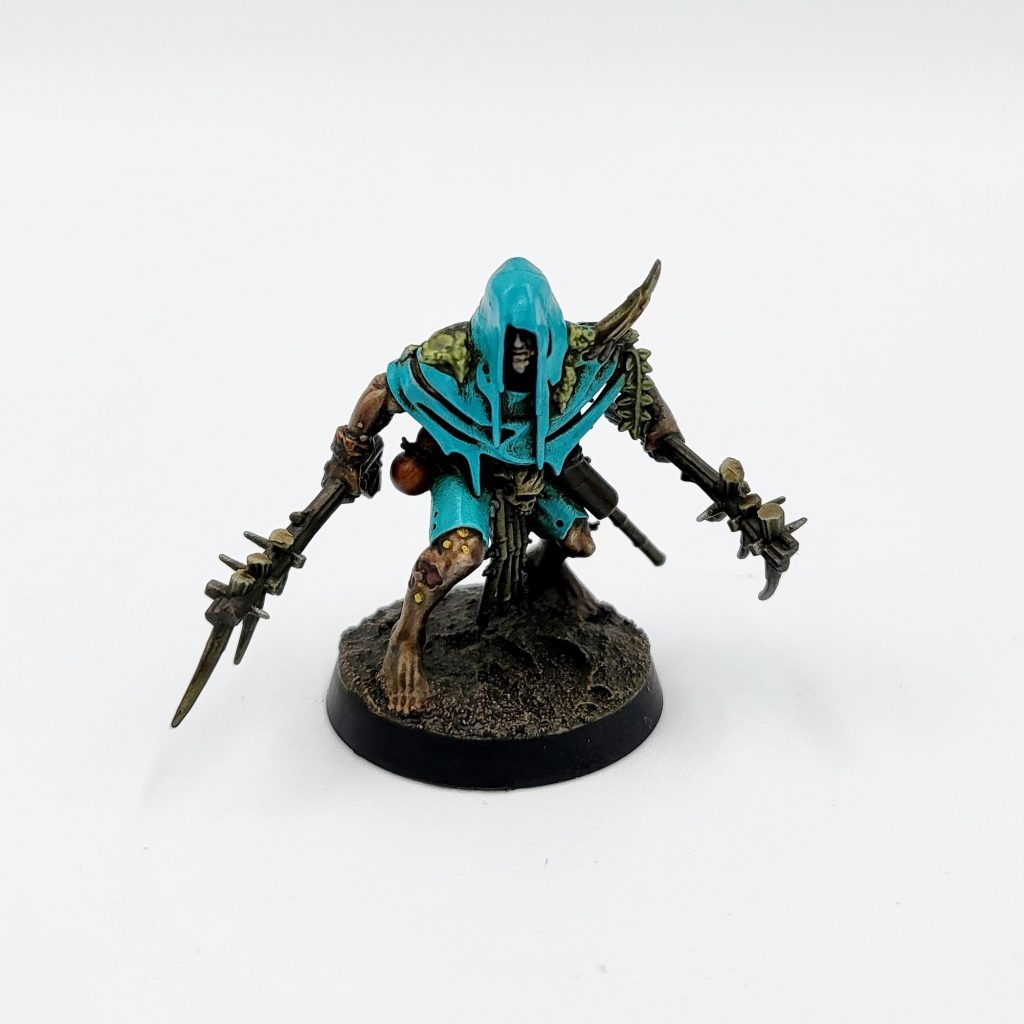
Overall, this is a solid boxed set. It’s got two flavorful Warbands, a bunch of big terrain (and scatter), and everything you need to get games of Warcry 2.0 rolling. Check back in with us soon as we dig into the new Warbands and terrain rules in the Rot and Ruin supplement. As always, if you have any questions or suggestions, drop us a line at Contact@Goonhammer.com.
